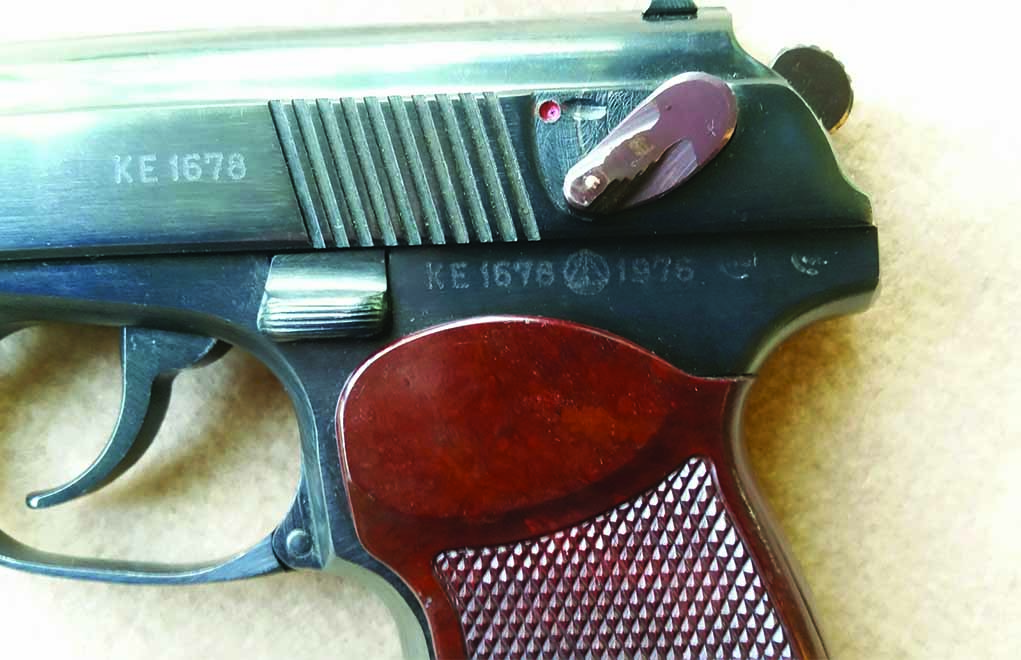

A 12-round magazine was also introduced.īeyond manufacture of the gun by IMF, the PM was produced to foreign markets by notable licensed contributors Ernst Thaelmann / Simson (Suhl) of Germany, Arsenal of Bulgaria and NORINCO of China. The hand grip was modified for better ergonomics and the firing chamber saw grooves added. This version elevated the muzzle velocity of the original action. The Makarov PM was revised to become the Makarov PMM in 1990. The empty magazine was released via a release lever at the base of the pistol grip. Upon emptying of the magazine, the slide locked open for prevention of subsequent firing and to visibly inform the operator that a reload was required. The operator could then let-off as many rounds as were available. Semi-automatic action occurred after the firing of each round as the pistol was automatically recocked and the chamber reloaded with a fresh cartridge. The operator initiated the firing action by pulling back on the slide to cock the hammer and introduce a fresh cartridge into the firing chamber.


The ejection port was fitted along the right side of the receiver, launching spent shell casings upwards and away from the operator. The rounded hammer spur protruded from the rear of the receiver ever so slightly but was still noticeable. The slide featured slab sides and nicely curved upper and lower surfaces. Safety and other pertinent mechanical functions were set along the left side of the receiver within reach of the operator's thumb. The trigger was curved forward and protected in an oblong trigger ring. Overall, the PM exhibited very well-countered and clean lines throughout, featuring some vertical ribbing near the main portion of the receiver. Sighting was accomplished by way of a bladed front and an adjustable notch rear sight. Some specialized models were later equipped with magazine counts of 10- and 12-rounds. The trigger system offered both double-action and single-action operation and effective range was listed out to 50 meters. Muzzle velocity was rated at 1,070 feet per second and the firing operation was, of course, blowback in nature. The magazine was a spring-loaded 8-round detachable box that was conventionally inserted in through the bottom of the hand grip. The pistol measured in at 160mm with a 98mm barrel assembly featuring four grooves and a right-hand twist. In the end, the 9mm Makarov was essentially the largest cartridge size applicable to safely firing from the blowback operation system.ĭesign of the receiver was nothing more than simply following the lines of the original Walther PP pistol but to a slightly larger scale.
Arsenal bulgarian makarov value full#
This allowed the some level of protection in ensuring that the pistol could only work with Soviet "in-house" ammunition and could not be used in numbers against their original owners in a time of full scale war. This produced a pistol cartridge that proved shorter than the 9mm Parabellum and made for a very unique - if decidedly Soviet - cartridge design overall. The 9mm Makarov was similar in some respects to the 9mm Short cartridge with featured a longer casing. The ammunition in the Soviet inventory would take the applicable name of "9x18mm Makarov". Makarov selected the Walther 9mm Ultra round as his starting point and developed his gun around it.
Arsenal bulgarian makarov value series#
Production of his PM pistol would be handled in the Soviet Union by Izhevsk Mechanical Factory.Ī design competition was held by Soviet authorities looking to replace the outgoing TT-33 series pistol. However, the Makarov PM would be his first true claim to fame for the Soviet Army. Makarov would go on to claim designs leading to the operational acceptance of the AM-23 cannon, the 9K111 "Fagot" man-portable missile launcher and the 9M113 "Konkurs" wire-guided missile. Despite its 1950s origins, it can still be found in the active Russian inventory as well as in use with other armies worldwide.ĭesign of the PM was attributed to none other than Nikolay Makarov, a firearms engineer having graduated from the Tula State University.

The Makarov PM was one such illegal copy and entered service in 1951. The type proved of such a most excellent design that it led to both legal and illegal production copies of the type in the decades following its introduction. The PM was based on the excellent qualities of the German Walther PP, a family of blow-back operated pistols appearing in 1935 and seeing extensive action throughout World War 2. The Makarov PM ("Pistolet Makarova") was designed and developed to replace the Soviet World War 2-era Tokarev TT-33 series semi-automatic pistol.


 0 kommentar(er)
0 kommentar(er)
